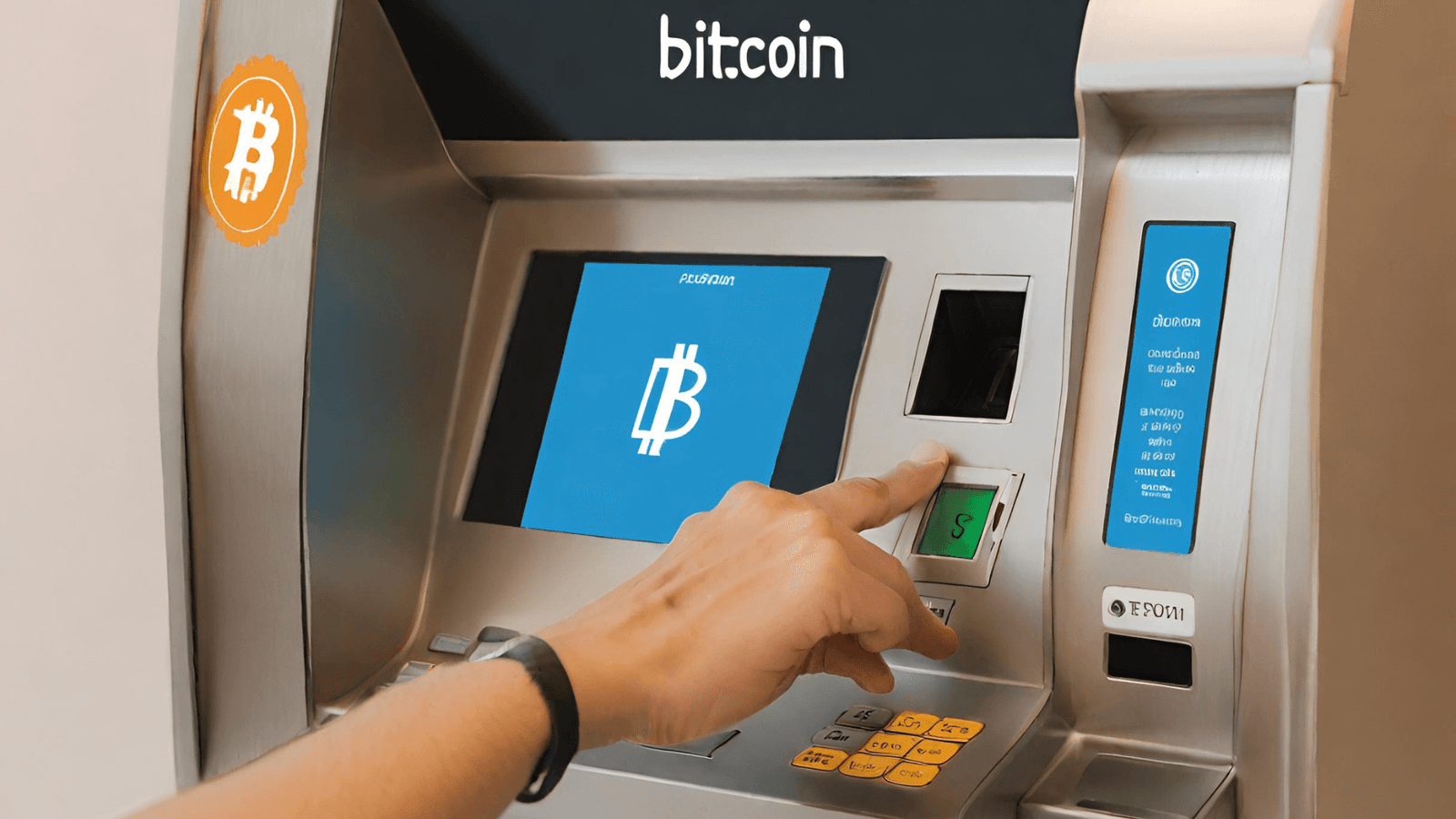A Beginner's Guide to Crypto Mining: Understanding and Getting Started

Crypto Mining
A Beginner’s Guide to Crypto Mining: Understanding and Getting Started | Cryptocurrency has taken the world by storm with its decentralized nature and potential for financial freedom. An integral aspect of cryptocurrencies is mining, a process that validates transactions and ensures the security of the underlying blockchain. In this article we will delve into the topic of cryptocurrency mining, what it is, how it works, its characteristics and ethical considerations.
What is crypto mining To truly understand crypto mining we must first understand the concept of cryptocurrency itself. Cryptocurrency is a form of currency that uses cryptography for secure transactions. traditional currencies, not controlled by any authority such as a government financial institution. Instead, it runs on a decentralized network known as a blockchain.
Cryptocurrency mining plays a crucial role in maintaining the integrity and security of the blockchain. In essence, miners use their computational power to solve complex mathematical puzzles, a process that verifies and adds transactions to the blockchain. In this way, they guarantee the validity of transactions and prevent any fraudulent activity within the network.
How Does Crypto Mining Work?

Fundamentally, cryptocurrency mining involves two key components: proof-of-work (PoW) and consensus mechanisms. PoW is a cryptographic puzzle that miners must solve to validate transactions. This process requires enormous computing power.
Miners compete with each other to solve the puzzle, and the first miner to do so earns the right to add verified transactions to the blockchain. This process of validating transactions and adding blocks to the blockchain is known as consensus.
Miners are incentivized to participate in the mining process through rewards. When a miner successfully adds a block to the blockchain, he is rewarded with a certain amount of cryptocurrency. This encourages miners to invest in powerful hardware and dedicate their resources to the mining operation.
Is Crypto Mining Profitable?

The profitability of cryptocurrency mining varies based on several factors. An important consideration is electricity costs, as mining requires substantial energy consumption. Higher electricity rates can have a significant impact on the profitability of mining operations.
Furthermore, the hardware used for mining plays a crucial role in determining profitability. Specialized mining hardware, such as ASICs (application-specific integrated circuits) or GPUs (graphics processing units), are designed to perform mining tasks efficiently. However, these hardware options can be expensive to acquire and maintain.
Calculating potential profits from mining involves estimating the return on investment (ROI). This takes into account factors such as the current market value of the mined cryptocurrency, mining difficulty, and expected mining rewards. It is essential to consider the volatility of mining premiums and market conditions, as they can significantly impact profitability.
Ethical Considerations in Crypto Mining
While cryptocurrency mining offers potential financial opportunities, it is important to address the ethical considerations associated with this practice. A significant concern is the environmental impact and energy consumption of mining operations. Energy requirements for mining can be significant and can contribute to carbon emissions.
Another ethical concern concerns the issue of centralized mining pools and the concentration of power. Mining pools bring together multiple miners to combine their resources and increase their chances of earning mining rewards. However, this concentration of power raises questions about decentralization and potential network vulnerabilities.
To promote sustainability and ethical mining, it is essential to adopt socially responsible mining practices. This may involve using renewable energy sources for mining operations, supporting decentralized mining pools and actively contributing to the development of environmentally friendly mining solutions.
Getting Started with Crypto Mining
Now that we’ve covered the basics of cryptocurrency mining, let’s explore the steps to get started in this exciting field.
Choosing the right cryptocurrency to mine
When choosing a cryptocurrency to mine, several factors come into play. Consider the market demand for cryptocurrency, as mining a popular coin can potentially yield higher returns. Also, evaluate the mining difficulty of different cryptocurrencies, as some may be more accessible to novice miners.
Bitcoin and Ethereum are two of the most popular cryptocurrencies for mining. Bitcoin has established itself as the leading digital currency, while Ethereum offers various opportunities for mining and decentralized applications. Research these and other viable options, considering factors such as potential profitability and long-term viability.
Setting up a mining facility
Before you dive into mining, you’ll need to set up a mining rig. There are two main options for mining hardware: ASICs and GPUs. ASICs are specialized mining devices dedicated to specific cryptocurrencies, providing high performance but limited flexibility. GPUs, on the other hand, are more versatile and can mine more cryptocurrencies.
To assemble a mining rig, you will need components such as motherboard, power supply, CPU, RAM, storage, and of course ASIC or GPU. Follow a step-by-step guide to ensure correct configuration and component compatibility. It is important to optimize the efficiency of the mining plant and consider factors such as cooling and energy consumption.
Selecting a mining software
Once you have your mining rig set up, it’s time to choose the right mining software. There are several options available, each with its own unique features and compatibility. Consider factors such as ease of use, stability, and the ability to mine your desired cryptocurrency.
Installing and configuring mining software typically involves downloading the software, setting up a wallet address to receive mined coins, and selecting your preferred mining options. Follow the specific instructions provided by your chosen software to ensure a smooth installation process.
Join a mining pool
Mining pools offer an interesting option for novice miners, as they provide a platform to combine resources and increase your chances of earning rewards. Research and evaluate different mining pools based on factors such as payment structure, pool fees, and reputation within the mining community.
Joining a mining pool usually involves creating an account, configuring your mining software to connect to the pool, and providing the necessary credentials. Be sure to follow the instructions provided by your chosen pool to participate and successfully set up your mining software.
Protection of mining operations
The security of your mining operation is of the utmost importance. Cryptocurrency wallets play a crucial role in safeguarding your mined coins. Research different wallet options, such as hardware wallets, software wallets, or online wallets, and choose one that aligns with your security needs.
Implementing cybersecurity practices is also essential to protecting your mineral assets. Use strong, unique passwords, enable two-factor authentication, and regularly update software and firmware. Be vigilant against phishing attempts and ensure your mining operation is protected from potential threats.
Optimizing cryptocurrency mining operations
Once your mining operation is set up and secured, it’s time to focus on optimizing its efficiency and profitability.
Mining strategies and techniques
Explore different mining strategies such as solo mining and pool mining. Solo Mining involves individual mining, without the support of a mining pool, which can result in sporadic rewards but maintains the decentralized nature of cryptocurrencies. Pool mining, on the other hand, offers a more consistent reward stream at the expense of centralized control.
Also, familiarize yourself with mining techniques such as overclocking and undervolting. Overclocking involves increasing the performance of your mining hardware, potentially leading to higher hash rates. Undervolting, on the other hand, focuses on reducing power consumption while maintaining optimal performance.
Monitoring and management of mining operations
Monitoring and managing mining operations is essential to maximizing efficiency and identifying any problems. Use mining monitoring tools and software to monitor the performance of your mining rig, including parameters such as temperature, hash rate, and power consumption.
Establish a maintenance routine to ensure your mining rig is running at its best. Clean your hardware regularly, check for software updates, and promptly resolve any hardware or software issues. Solve common mining problems by researching and seeking assistance from the cryptocurrency mining community.
Regularly evaluate and adapt your mining strategies based on performance and market conditions. Stay informed about any changes in mining difficulty, the potential profitability of different cryptocurrencies, and technological advances that may impact your mining operations.
Scale your mining operations
As you gain experience and confidence in cryptocurrency mining, you may want to consider scaling your operations. Factors to consider include profitability, scalability costs, and potential limitations of your existing setup. Expanding your mining operations may involve increasing the number of mining rigs or investing in additional hardware to increase computing power.
Finding a balance between profitability and costs is crucial when you want to scale up your mining business. Evaluate the potential returns and expenses associated with scaling, considering factors such as electricity costs, hardware investments and overall market conditions. Downsizing should be done strategically to ensure optimal profitability and avoid unnecessary expenses.
Summary and relevant FAQs
Summary of key points
In this article we have covered the fundamentals of crypto mining, including its importance in maintaining blockchain security, the mining process itself, profitability factors, and ethical considerations. We’ve also provided a step-by-step guide for beginners on how to get started with cryptocurrency mining, from choosing the right cryptocurrency and hardware to keeping your mining operations safe.
It is important to understand that research and responsible mining practices are essential in this ever-evolving field. Cryptocurrency mining offers exciting opportunities, but requires dedication, resources, and a commitment to sustainable and ethical practices.
Frequent questions
What is the minimum investment required for cryptocurrency mining?
The minimum investment required for cryptocurrency mining varies based on several factors, including the cost of mining hardware, electricity rates, and the chosen cryptocurrency. Typically, it requires a significant initial investment, especially for specialized mining hardware.
How does mining difficulty affect profitability?
Mining difficulty is a measure of how difficult it is to find a valid hash for a block. As mining difficulty increases, it becomes increasingly difficult to mine cryptocurrency, potentially reducing profitability. It is important to consider mining difficulty when evaluating the potential returns of mining operations.
Can I mine multiple cryptocurrencies at the same time?
Yes, it is possible to mine multiple cryptocurrencies at once, depending on the mining hardware and mining software you use. However, keep in mind that mining multiple cryptocurrencies may require additional hardware resources and increase complexity in managing mining operations.
Is it possible to mine cryptocurrencies using a laptop?
In general, it is not recommended to mine cryptocurrencies using a laptop. Laptops typically have limited computing power and may not be suited to the intense processing requirements of cryptocurrency mining. Specialized mining hardware, such as ASICs or GPUs, is more appropriate for efficient and profitable mining.
What are some common pitfalls to avoid in cryptocurrency mining?
Some common pitfalls in cryptocurrency mining include failing to account for electricity costs, investing in outdated or inefficient mining hardware, failing to adequately protect wallets and mining assets, and failing to actively monitor and adjust strategies mining. To maximize profitability and minimize risk, it is important to stay informed, conduct thorough research, and practice responsible mining.
Remember, cryptocurrency mining is a complex and evolving field, and this article serves as a beginner’s guide to help you explore the basics and begin your mining journey. Happy mining!
(Note: This article provides general information and should not be considered financial or investment advice. Be sure to do your due diligence and consult professionals before making any investment decisions.)
A Beginner’s Guide to Crypto Mining: Understanding and Getting Started




